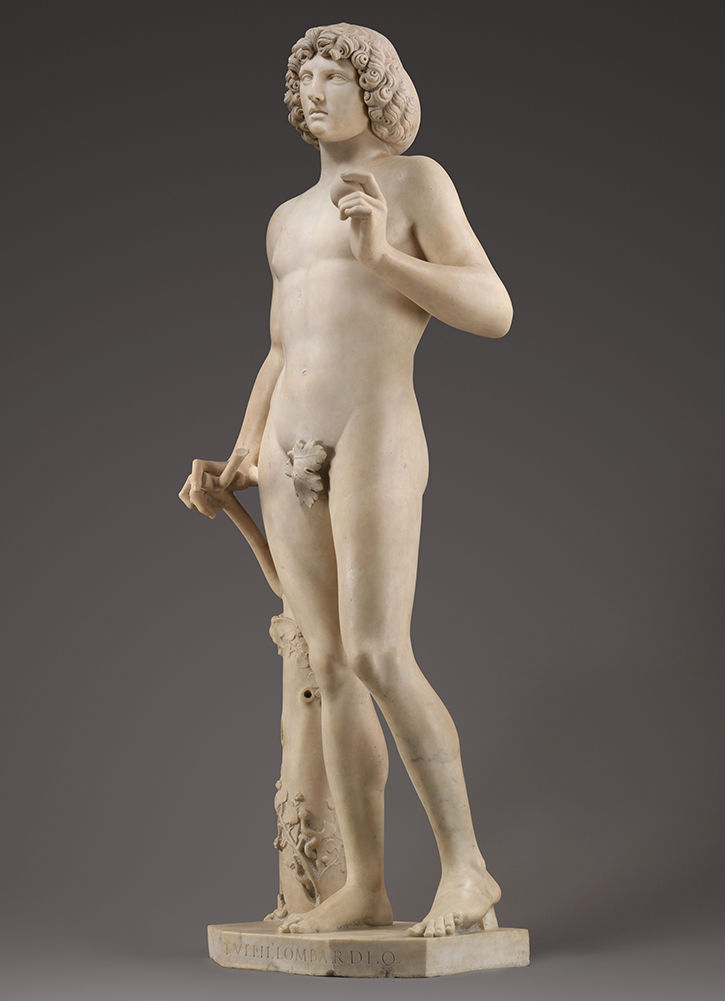Adam

Tullio Lombardo (Italian, ca. 1455–1532). Adam, ca. 1490–95. Marble. The Metropolitan Museum of Art, New York, Fletcher Fund, 1936 (36.163).
This young man's serene beauty resides in the balanced arrangement of his gently muscled limbs and torso. His anxiety is communicated through details: the tense forefinger of his right hand, his open mouth revealing his teeth, and his eyes turned to heaven. Tullio Lombardo's Adam encapsulates the Genesis story of the Creation of Man and his Fall. Made in God's image, Adam had to be perfect, and Tullio combined features of several ancient Roman sculptures—the pinnacle of sculptural achievement in the Renaissance mind—in an attempt to improve upon them. But by eating the fruit from the Tree of Knowledge, Adam admitted sin into the world and became ashamed of his own nakedness. From the front, Adam is shown about to bite into the apple. But if you move to the right, the apple is concealed, and we cannot see whether or not he has eaten. Thus Adam's open mouth might also suggest his fearful prayers to God.
"Adam should be off balance; he's about to take a bite from that terrible apple."
—Luke Syson, curator
"The fig leaf is one of the great moments that breaks the realism of this sculpture."
—Peter Bell, curator
"How would a sculptor have set about remaking the first man who ever existed?"
—Luke Syson, curator
All voices: Peter Bell, curator; Luke Syson, curator
Transcript: To Bite or Not to Bite? (Video)